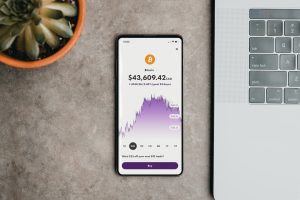The forex market is one of the most volatile and unpredictable financial markets in the world. To minimize losses and protect your capital, it is essential to use risk management tools such as stop loss orders. A stop loss is an order to close a trade at a predetermined price level to limit the potential losses. In this article, we will explain how to set stop loss on forex.
What is a Stop Loss?
A stop loss is an order that you place with your broker to close a trade at a specific price level. It is a risk management tool that helps you to limit your losses in case the market moves against your position. For example, if you buy a currency pair at 1.2000 and set a stop loss at 1.1900, your trade will automatically close if the price falls to 1.1900 or lower.
Why Set a Stop Loss on Forex?
Setting a stop loss on forex is essential because it helps you to limit your losses and protect your capital. The forex market is highly volatile, and prices can move rapidly in either direction. If you don’t set a stop loss, you risk losing all your capital if the market moves against your position.
Moreover, setting a stop loss is part of a disciplined trading strategy. It helps you to stick to your trading plan and avoid emotional trading decisions. By setting a stop loss, you know exactly how much you are willing to risk on each trade, and you can calculate your potential losses and profits before entering a trade.
How to Set a Stop Loss on Forex?
To set a stop loss on forex, you need to follow the following steps:
Step 1: Choose a currency pair and open a trade
The first step is to choose a currency pair and open a trade. You can do this through your trading platform or your broker’s website. Choose the currency pair you want to trade and enter your trade size, buy or sell, and the entry price.
Step 2: Determine the Stop Loss Price
The next step is to determine the stop loss price. This is the price level at which your trade will close if the market moves against your position. To determine the stop loss price, you need to consider the market conditions, your trading strategy, and your risk tolerance.
For example, if you are trading a volatile currency pair, you may want to set a wider stop loss to give the trade more room to breathe. On the other hand, if you are trading a less volatile currency pair, you may want to set a tighter stop loss to minimize your losses.
Step 3: Enter the Stop Loss Price
Once you have determined the stop loss price, you need to enter it into your trading platform. This can be done by placing a stop loss order with your broker. In most trading platforms, you can do this by right-clicking on the open trade and selecting “modify order.”
Step 4: Monitor Your Trade
After you have set your stop loss, you need to monitor your trade to see how it performs. If the market moves in your favor, you can adjust your stop loss to lock in profits. If the market moves against your position, your stop loss will close the trade and limit your losses.
Conclusion
Setting a stop loss on forex is an essential risk management tool that helps you to protect your capital and minimize your losses. By following the steps outlined in this article, you can learn how to set a stop loss on forex and incorporate it into your trading strategy. Remember, a stop loss is only effective if you use it consistently and stick to your trading plan.






